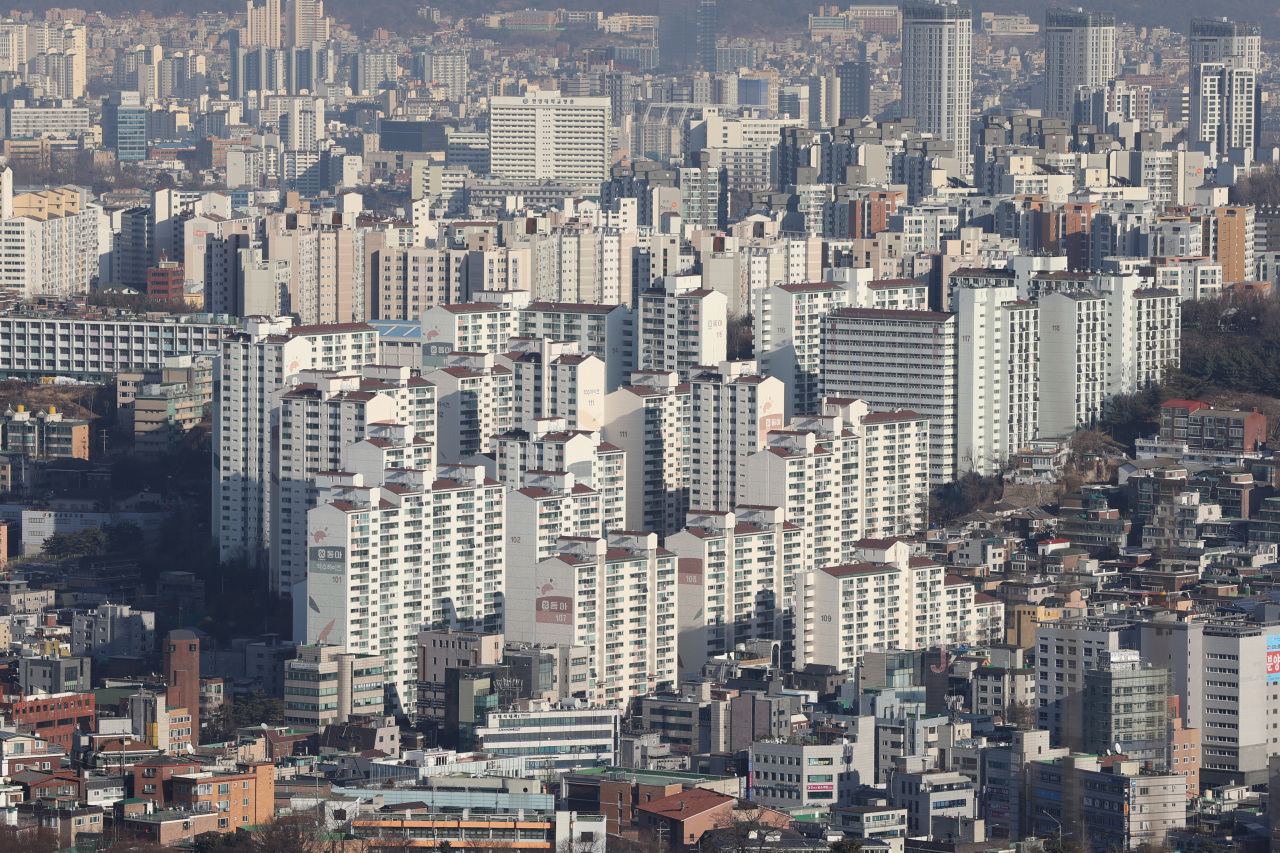 |
An aerial view of residential area in Seoul (Yonhap) |
The South Korean government announced it plans to supply more than 80,000 housing units in Seoul and adjacent areas over the next six years by removing restrictions on developing greenbelt areas in the capital for the first time in 12 years.
The Ministry of Land, Infrastructure and Transport and Ministry of Economy and Finance on Thursday announced a real estate development plan that aims to stabilize the housing market amid soaring apartment prices in the capital.
“The key to stabilizing the real estate market lies in sufficient housing supply to meet demand and management of liquidity at an appropriate level,” Finance Minister Choi Sang-mok said while announcing the scheme at the Government Complex in Seoul.
Through this housing supply expansion plan, the government seeks to supply over 427,000 homes and new residential land in Seoul over the next six years.
To this end, authorities will ease restrictions on greenbelt or restricted-development zones in Seoul and adjacent land. This is the first time the government has done so since between 2009 and 2012, when development restrictions on some 1.47 million square meters of protected areas in Naegok-dong, Seocho-gu and Segok-dong in Gangnam-gu were removed during the former Lee Myung-bak administration.
Currently Seoul's green belt has a total area of 149 square kilometers on the outskirts of 19 of its districts -- 24.6 percent of the city's total area.
The government has decided to add more than 20,000 units to public housing sites in the metropolitan area, such as Phase 3 New Town lots adjacent to Seoul, through land use efficiency. The new town sites include those in Wangsuk, Namyangju; Gyosan, Hanam; and Gyeyang, Incheon.
Through new construction, more than 110,000 nonapartment homes, such as villas, will be swiftly supplied for purchase and as rentals.
The total number of nonapartment purchases and rentals, including new construction, will be significantly expanded from the previous plan of 120,000 units to at least 160,000 units.
"To speed up reconstruction and redevelopment, which are the core of urban housing supply, we will enact related laws and ensure that construction of 176,000 units begins over the next six years,” Choi said.







